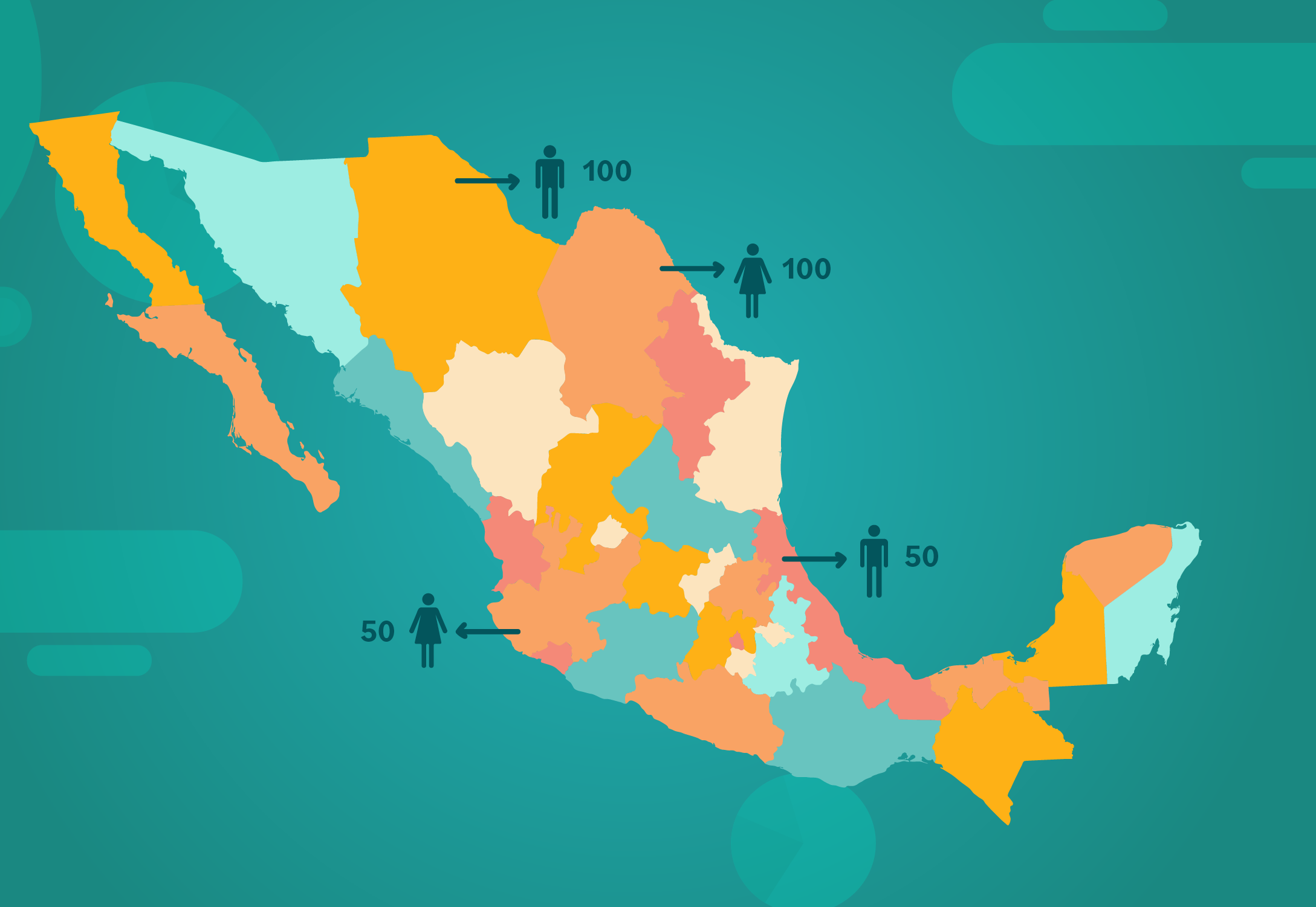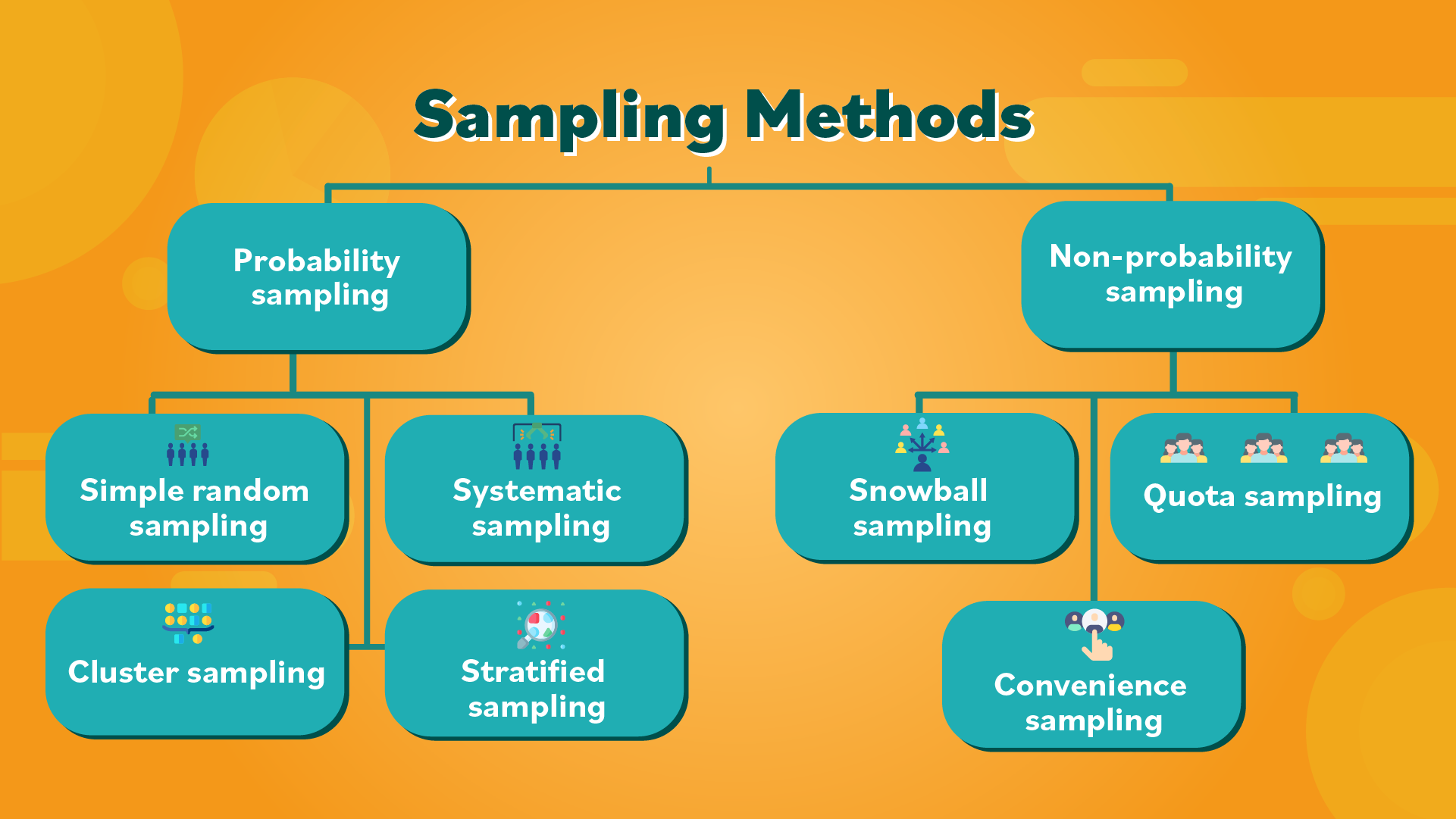Lesson 13: Sampling Methods
/en/statistics-basic-concepts/what-is-sampling/content/
Sampling methods
Sampling is broken up into two categories: probability and non-probability sampling. Let’s discuss these categories, the sampling methods in each one, and also take a look at some basic examples.
What is probability sampling?
In probability sampling, everyone in the population has an equal chance of being included in the sample. Here are some common types of probability sampling…
- Simple random sampling: People (or things) are selected at random, and each one has the same chance of being chosen.
- For example, if there are 100 buildings and you wanted to estimate the average number of floors per building, you might randomly select 20 buildings for your sample.
- Systematic sampling: The first person is selected randomly, and then a fixed interval is used to select additional individuals.
- For example, in a population of 1,000 people, the first selected individual is number 2 (shown in blue).
- From there, every fourth person is selected, such as numbers 6, 10, 14, 18, 22, etc., until you reach your sample size of 100 individuals.
- Cluster sampling: This is used when a population is huge or spread out over a large area. People are randomly selected from groups or areas, such as states.
- For example, to study a country’s population, 100 individuals may be randomly selected from larger states, and 50 from the smaller ones.
- Stratified sampling: The population is divided into smaller groups, or “strata,” that share a characteristic. People from each smaller group are randomly selected to form the sample.
- For example, if we want to know the top favorite food among students in a school, we can divide the students into strata based on their grade, and then choose a few students randomly from each grade to be in our sample.
What is non-probability sampling?
When it’s difficult to use one of the probability sampling methods mentioned above, you might have to use non-probability sampling instead. This means selecting individuals based on convenience or your best judgment. Not everyone in the population has an equal chance of being selected. Here are three types of non-probability sampling…
- Snowball sampling: You start with a small group who meet certain criteria (or standards), and then ask them to refer other people who also meet the criteria. This method is often used to study hard-to-reach populations, or to identify people with rare characteristics.
- Quota sampling: The population is divided into groups based on shared characteristics, such as gender or age. A proportional, representative sample is selected from each group. For example, if a company has 100 employees, with 40 being men and 60 being women, they might select 4 men and 6 women to be in the sample.
- Convenience sampling: If you only have access to a certain number of people, you might choose this method. Who is available to participate in your study? While convenience sampling isn’t as reliable, it’s more convenient your time and resources might be limited.
Final takeaways
Probability sampling is a more reliable way of selecting people for a study because it gives everyone in the group an equal chance of being picked. This means that the findings are more likely to be true for the whole group.
Non-probability sampling can sometimes give inaccurate results because it doesn't choose people randomly, which can make the sample not look like the population it's supposed to represent. As mentioned previously, though, the clock might be ticking, or you can only ask so many people to participate.
In the next lesson, we’ll introduce the fundamentals of probability.
/en/statistics-basic-concepts/what-is-probability/content/






